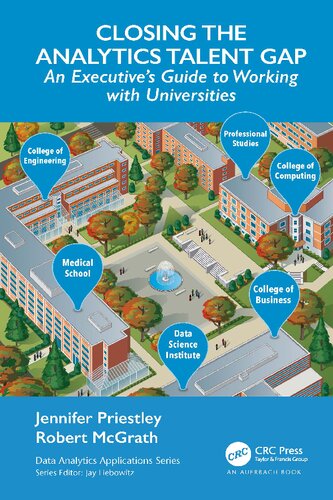

Most ebook files are in PDF format, so you can easily read them using various software such as Foxit Reader or directly on the Google Chrome browser.
Some ebook files are released by publishers in other formats such as .awz, .mobi, .epub, .fb2, etc. You may need to install specific software to read these formats on mobile/PC, such as Calibre.
Please read the tutorial at this link. https://ebooknice.com/page/post?id=faq
We offer FREE conversion to the popular formats you request; however, this may take some time. Therefore, right after payment, please email us, and we will try to provide the service as quickly as possible.
For some exceptional file formats or broken links (if any), please refrain from opening any disputes. Instead, email us first, and we will try to assist within a maximum of 6 hours.
EbookNice Team

Status:
Available4.4
38 reviewsHow can we recruit out of your program? We have a project – how do we reach out to your students? If we do research together who owns it? We have employees who need to "upskill" in analytics – can you help me with that? How much does all of this cost? Managers and executives are increasingly asking university professors such questions as they deal with a critical shortage of skilled data analysts. At the same time, academics are asking such questions as: How can I bring a "real" analytical project in the classroom? How can I get "real" data to help my students develop the skills necessary to be a "data scientist? Is what I am teaching in the classroom aligned with the demands of the market for analytical talent?
After spending several years answering almost daily e-mails and telephone calls from business managers asking for staffing help and aiding fellow academics with their analytics teaching needs, Dr. Jennifer Priestley of Kennesaw State University and Dr. Robert McGrath of the University of New Hampshire wrote Closing the Analytics Talent Gap: An Executive’s Guide to Working with Universities. The book builds a bridge between university analytics programs and business organizations. It promotes a dialog that enables executives to learn how universities can help them find strategically important personnel and universities to learn how they can develop and educate this personnel.
Organizations are facing previously unforeseen challenges related to the translation of massive amounts of data – structured and unstructured, static and in-motion, voice, text, and image – into information to solve current challenges and anticipate new ones. The advent of analytics and data science also presents universities with unforeseen challenges of providing learning through application. This book helps both organizations with finding "data natives" and universities with educating students to develop the facility to work in a multi-faceted and complex data environment.
.